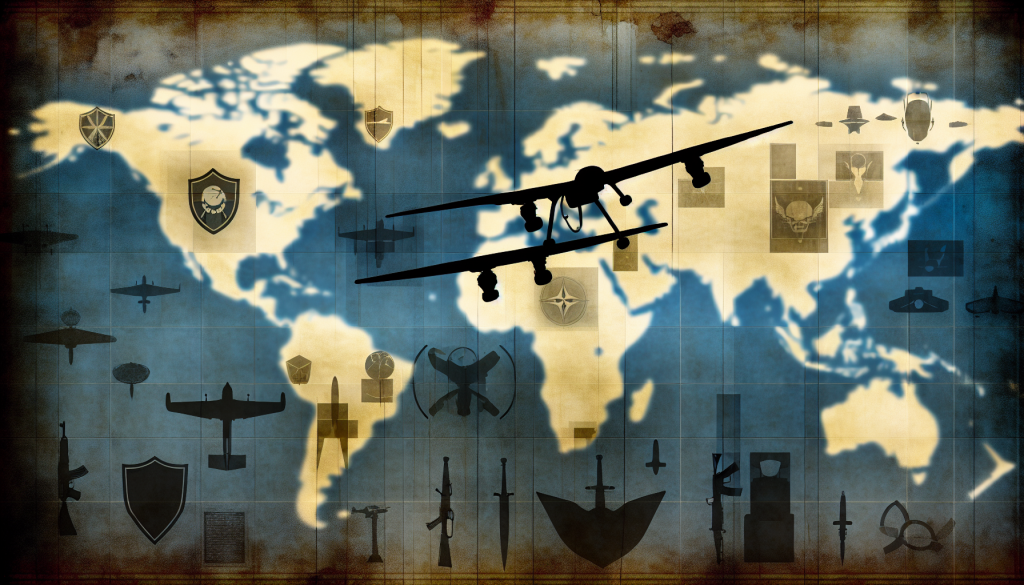The Changing Landscape of the U.S. Drone Industry
The U.S. drone industry finds itself at a significant turning point, shaped by transformative policy changes that began under the Trump administration and have continued to evolve under President Biden. A noteworthy shift occurred in 2020 when the Trump administration reinterpreted the Missile Technology Control Regime (MTCR), removing barriers for exporting large military drones. This change effectively reclassified slower-moving systems, such as the General Atomics MQ-9 Reaper and Northrop Grumman RQ-4 Global Hawk, as less restricted Category II items. Initially, this policy allowed for case-by-case approvals for drones capable of carrying payloads of 500 kg over distances of 300 km, a move that has opened up new markets for U.S. defense contractors.
Market Expansion and Strategic Gains
The implications of this policy shift are monumental for the global military drone market, projected to grow from $45.42 billion in 2025 to an astonishing $96.6 billion by 2032. This exponential growth is primarily driven by increased defense budgets worldwide and the growing demand for real-time intelligence in conflict zones. Industry leaders like General Atomics and Northrop Grumman are well-positioned to take advantage of this booming market. For instance, General Atomics recently bagged a massive $30 billion Air Force contract for drone systems, including the innovation-laden YFQ-42A Collaborative Combat Aircraft (CCA), a platform designed for autonomous operations.
Meanwhile, Northrop Grumman is securing its foothold in the Asia-Pacific market through initiatives such as a $1.4 billion contract with Australia for MQ-4C Triton HALE (High-Altitude, Long-Endurance) UAVs. The reinterpretation of the MTCR has facilitated these firms in expanding their export footprint. For example, the MQ-9 Reaper, once held back by Category I restrictions, is now actively deployed by NATO allies in Europe and Asian partners for Intelligence, Surveillance, and Reconnaissance (ISR) missions.
Furthermore, Northrop Grumman’s XQ-58A Valkyrie, a low-cost and high-speed drone positioned to work harmoniously with F-22 and F-35 fighters, has piqued the interest of Middle Eastern nations looking to modernize their air forces. As analysts predict, the U.S. is set to retain a dominant share of the global drone market through 2030, with the likes of General Atomics and Northrop Grumman likely to account for over 40% of high-end UAV sales.
Geopolitical Risks and Ethical Concerns
However, alongside these positive market trends come pressing geopolitical risks and ethical dilemmas. The relaxed export controls have raised alarms over potential drone proliferation. Critics argue that this loosening could permit adversarial nations to exploit sensitive technologies under the guise of space-launch vehicles. For instance, China’s aggressive advancement in armed drone exports—coupled with the country’s non-participation in the MTCR—has already begun to undermine U.S. dominance in critical regions like the Middle East and Southeast Asia.
The U.S. has responded to these challenges by stepping up its own drone exports, yet this approach poses the risk of ushering in a “race to the bottom,” where allied nations may prioritize cost savings over ethical considerations. Human rights advocates have voiced significant concerns regarding the potential misuse of U.S. drones. In 2025, troubling reports surfaced about Saudi Arabia deploying MQ-9 Reapers in Yemen, a situation that has drawn international criticism for increasing civilian casualties and rights violations.
Additionally, the integration of AI-driven targeting systems in platforms such as the XQ-58A raises questions about accountability in autonomous warfare. These issues are exacerbated by the reality that many nations receiving these technologies lack robust oversight mechanisms, thereby increasing the risk of technology falling into the hands of non-state actors or rogue regimes.
Investment Opportunities in a Dynamic Sector
For investors, the U.S. drone sector presents a compelling landscape of growth coupled with geopolitical leverage. Not only are General Atomics and Northrop Grumman reaping the benefits of expanded export markets, but they are also investing significantly in next-generation technologies. General Atomics, for instance, has developed a robust R&D pipeline that includes pioneering AI-enhanced swarm drones and advanced digital engineering tools designed to lower production costs. Meanwhile, despite facing challenges like cost overruns in its MQ-4C Triton program, Northrop Grumman is advancing cutting-edge projects such as the B-21 Raider and RQ-180 stealth drones, both of which have the potential to redefine long-range strike capabilities.
Nevertheless, potential investors should be prudent in weighing these opportunities against the inherent long-term risks. The proliferation of U.S. drones might aggravate tensions in already volatile regions, inciting retaliatory actions from rival powers like China. Additionally, changing regulatory landscapes—think potential congressional pushback against MTCR reinterpretations—could disrupt export pipelines. A balanced investment strategy would thus involve selecting firms with diversified portfolios, such as General Atomics’ combination of military and commercial drones, as well as those committed to strong ethical governance frameworks.
The Future of Warfare
As the U.S. drone industry continues to evolve, driven by policy adaptations and market demands, it finds itself at a unique intersection of opportunity and risk. The expansive potential for defense contractors comes with equally pressing questions about the ethical ramifications and geopolitical stability that such growth may prompt. How the market navigates this complex landscape will not only shape the future of defense technologies but also redefine the paradigms of warfare on a global scale.

